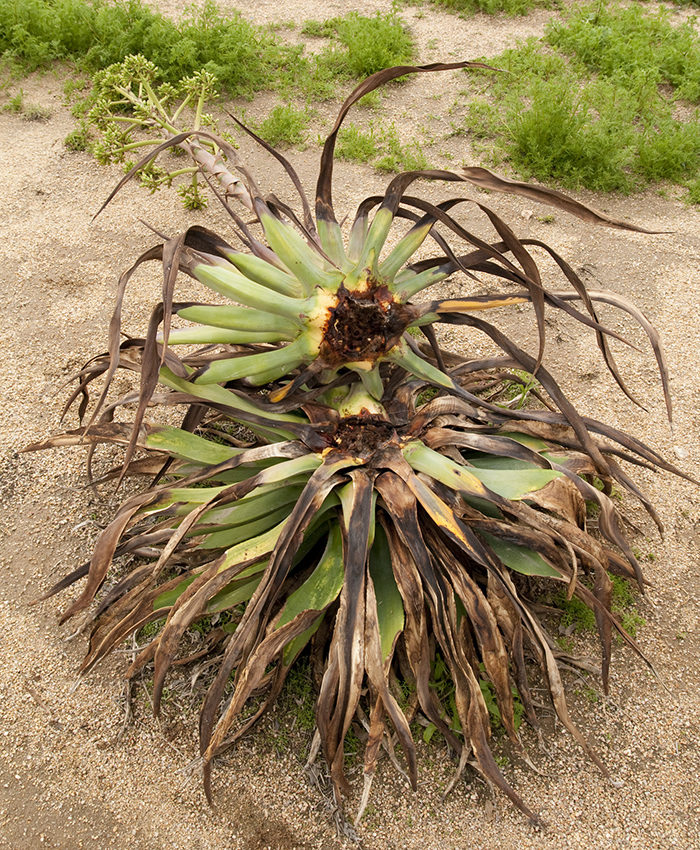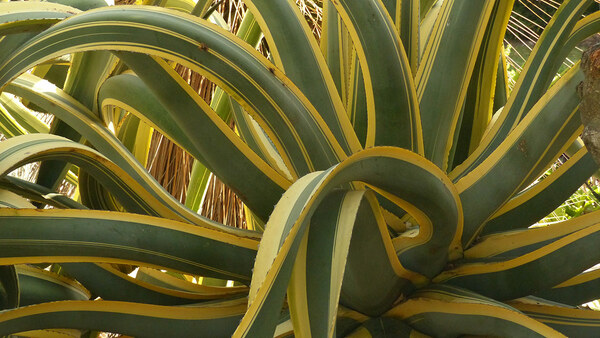
What is an agave snout weevil (Scyphophorus acupunctatus) you ask? We asked the same thing a few months ago when we noticed one of our American century plants (Agave americana, Zones 8–10) looking oddly wilted around the base. We were fairly new to Arizona and had never encountered the agave snout weevil over all our years in Colorado. Little did we know that this tiny terror is well known in the Southwest, infamous for the damage it can cause to a beautiful, mature landscape. Is your yard at risk? Here’s what we have learned so far about these dastardly little devils.
When I (Laurel) was growing up, Mom (Sheila) tried her best to pass along her love for bugs. She even had a collection of insects, well preserved in jewelry boxes. So we will be the first to admit that these weevils are actually a bit cute, with their elephant-like snouts. They are brownish-black in color and are on the smaller side, about half an inch in length.
The problem for gardeners comes when a female agave snout weevil enters the base of a plant to lay her eggs. These eggs hatch into grubs, which will feed on the core of the agave, eventually deteriorating the plant beyond repair and killing it.

Although agave snout weevil targets multiple species of agaves, the American century plant is the most susceptible, as we experienced in our yard. Many master gardeners in the Southwest agree that the larger agave species seem to be more at risk than the smaller species. One cold-hardy variety that is less susceptible to damage is Parry’s agave (Agave parryi, Zones 7–10); it has harder leaves that seem to deter the weevils.
After discovering the infestation, we wanted to figure out if there was a way to save the damaged plant. We quickly discovered that we couldn’t. Our next challenge was to see if we could prevent weevils from infesting the many other agaves in our yard. After much research we decided on a course of action. The first step was to remove the infected plant, which was a bummer, but necessary to prevent the weevils from spreading. The next step was to find an organic insecticidal soap to apply to that area of the garden, with the hope that it would kill any remaining larvae before they made their way to neighboring agaves. Another important tip we learned is to never plant pups from infested agaves, as they can carry the eggs.
Unfortunately, being on a constant look-out for agave snout weevils is now part of our weekly routine, but luckily we only lost one plant to them. Now that we are informed, we can be proactive in preventing them from invading any of our other agaves. We wish the same luck to you and your agaves.
Sheila Schultz and Laurel Startzel are a mother-daughter duo who founded Denver Dirty Girls Container Gardening while living in Denver, Colorado and have continued their business since moving to Tucson, Arizona.


















Comments
Log in or create an account to post a comment.
Sign up Log in